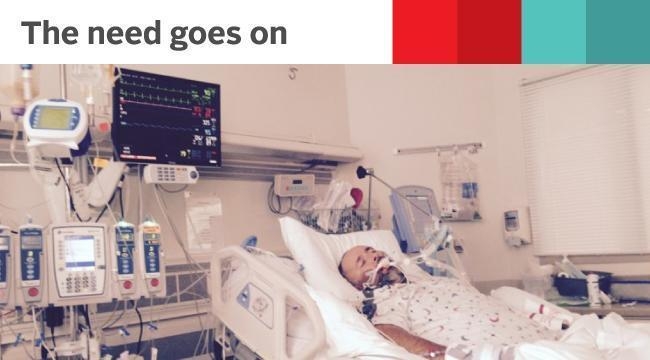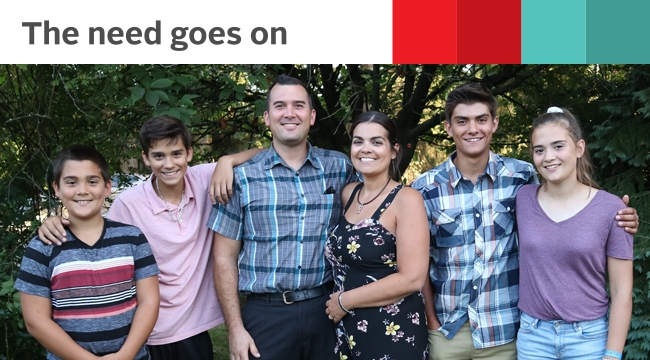Hope and healing, thanks to blood donors and a stem cell donor

Blood donors helped Emmanuel Boakye survive sickle cell disease. Then a stem cell donation from his sister delivered a life beyond it.
It wasn’t long after his birth that Emmanuel Boakye’s parents knew something was very wrong with their little boy.
“I would cry to the point where the neighbours would come knocking,” says Emmanuel, who grew up in Richmond Hill, Ont. “When I was 18 months old, my fingers and toes got swollen and they rushed me to the hospital. They did a bunch of testing and found out I had sickle cell.”
Sickle cell disease is the most common inherited condition in Canada, affecting approximately 6,000 people across the country. It causes the body to produce abnormal hemoglobin, a protein in red blood cells that carries oxygen to the body’s tissues and transports carbon dioxide back to the lungs. The red blood cells become rigid, with a sickle-like shape that can cause them to block blood vessels. Complications can include severe pain episodes, strokes, and even organ failure.
While some people with sickle cell disease require regular blood transfusions from an early age, Emmanuel’s blood needs in childhood were more occasional. What he remembers more is episodes of “excruciating pain” as well as surgeries, so lots of time in doctors’ offices and in the hospital. The illness was also isolating. He had many interests, from the creative arts to fashion and sports, and the challenges of sickle cell disease made it difficult to pursue his dreams.
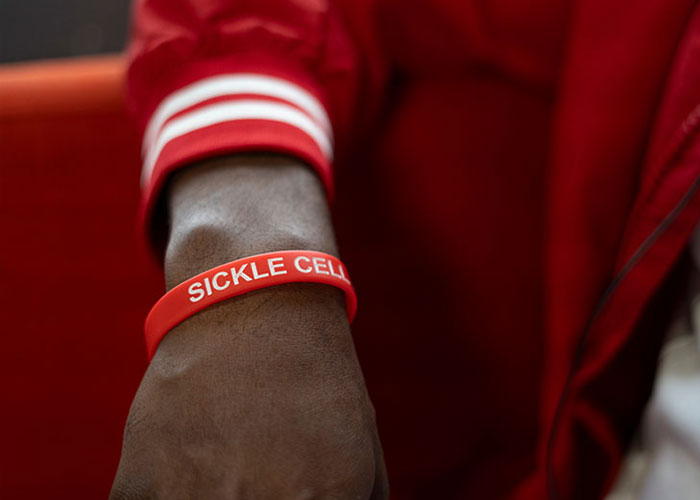
Donated blood ‘kept me alive as I battled for survival’
Then in 2019, a sickle cell crisis landed Emmanuel in hospital for the fight of his life. It started with a tightening of the chest and stabbing pains in his legs. Soon after arriving in hospital he was placed in intensive care, and eventually an induced coma.
He woke up three weeks later, and spent his 29th birthday in hospital recovering.
“Transfusions were essential in sustaining me,” Emmanuel says. “They kept me alive as I battled for survival.”
Surviving that crisis gave Emmanuel the push to do something he’d been thinking about for some time: start a non-profit. Basketball was in the air that spring, with the Toronto Raptors making history as the first Canadian team to win the NBA championship. Emmanuel and his friend, Kwaku Watson, joined the excitement by laying the groundwork for a new basketball tournament called Lakeside Hoops. The first one was in 2020, and the annual event raises awareness of sickle cell disease, with proceeds going to help patients with medical expenses.
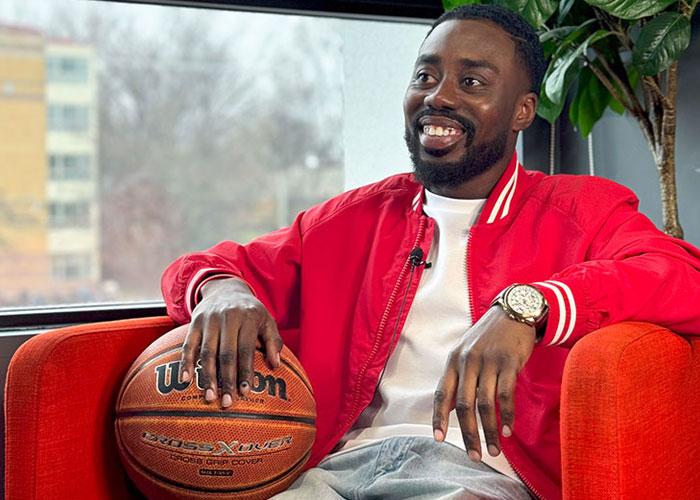
Blood transfusions and a stem cell transplant deliver ‘opportunity to live’
Blood donors have continued to support Emmanuel in the years since. On one memorable occasion in 2021, a blood donation helped get him through a crisis that nearly caused him to miss a friend’s 30th birthday celebration in Miami.
He also needed a blood transfusion after a stem cell transplant in 2023. Stem cells are immature cells produced by bone marrow — the spongy tissue found in the centre of some bones — which can develop into any cell present in the bloodstream. A stem cell transplant can be a cure for some people with sickle cell disease, and in Emmanuel’s case, his sister, Abigail, was found to be a suitable match.
“My sister’s courageous decision to be my donor not only saved my life but also brought hope to our family,” says Emmanuel.
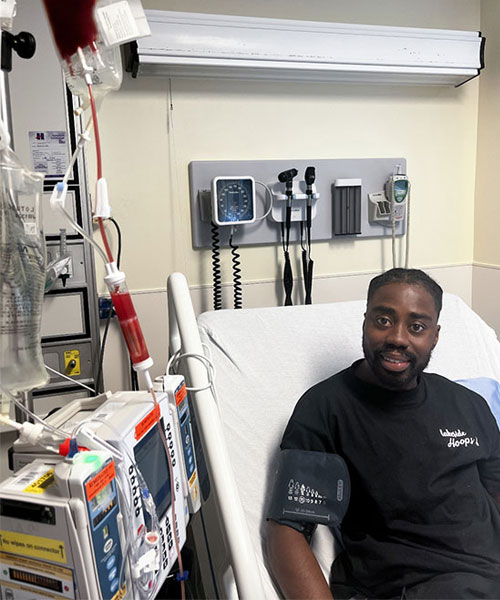
Today, Emmanuel is still on a path to recovery. A lifetime with sickle cell disease did lasting damage; last fall, he needed a hip replacement. But thanks to all the donors who have helped him until now, he is full of hope.
“The health care system and these donors are giving me an opportunity to live, in the sense that they’re repairing me,” he says. “And it’s going to get to the point where I feel like, ‘yes, I can do anything.’”
Building a diverse donor base for blood and stem cells
As he explores the new opportunities open to him, he’s inspired to keep helping others, too. That includes using Lakeside Hoops to encourage young people to join Canadian Blood Services Stem Cell Registry. Most people who need a stem cell transplant do not have a match in their own family, so volunteers from the registry are frequently called upon to help save lives. And since a patient may be more likely to find a match in a person who shares their ethnic background, diversity on the stem cell registry is essential.
A diverse blood donor base is essential, too. Those who receive frequent blood transfusions — and those with rare blood types — need blood with the closest match possible. Since blood types are inherited, this means that people living with sickle cell disease often rely on blood from donors of similar ancestry. Sickle cell disease is more frequent among those whose ancestors are from Africa, the Caribbean, Central and South America, the Middle East and South Asia, and people with similar ancestry to those living with sickle cell disease have the greatest potential to help as donors.
Emmanuel also sees Lakeside Hoops as an opportunity to inspire people to donate blood, as his sister Abigail — who is a nurse, in addition to having been his stem cell donor — already does.
Those few minutes a blood donor spends in the chair are “just life-changing,” says Emmanuel. “It’s like giving out a blessing.”
Thank you to all the recipients who have shared their stories with us for National Blood Donor Week 2024. Visit blood.ca/NBDW to read more stories and join our celebration of donors.
